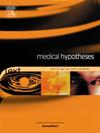Cavernous sinus hemodynamic buffering model (CSHBM): a novel hypothesis for neurovascular protection
IF 0.8
4区 医学
Q3 MEDICINE, RESEARCH & EXPERIMENTAL
引用次数: 0
Abstract
The cavernous sinus (CS) is an anatomically complex venous plexus located at the base of the skull, closely associated with the internal carotid artery (ICA) and cranial nerves controlling ocular movement and facial sensation. We propose the Cavernous Sinus Hemodynamic Buffering Model (CSHBM), hypothesizing that the CS acts as a dynamic hemodynamic buffer protecting these vital neurovascular structures from the pulsatile forces generated by the ICA and external mechanical stresses. According to this model, the venous blood acts as a viscoelastic cushion, and together with the trabeculated architecture and compliant walls of the sinus, facilitates absorption, attenuation, and gradual dissipation of arterial pulsatile energy. This mechanism reduces mechanical strain on adjacent cranial nerves and preserves microvascular stability. The model underscores a potentially underappreciated neuroprotective role of the CS, particularly relevant in pathologies such as carotid-cavernous fistulas and thrombosis. This hypothesis can be evaluated using computational fluid dynamics (CFD), fluid–structure interaction (FSI) modeling, and advanced imaging modalities like 4D Flow MRI and phase-contrast MRI to assess pressure dynamics and flow modulation within the cavernous sinus. Understanding this buffering function may provide new insights into cavernous sinus pathophysiology and inform future diagnostic and therapeutic approaches.
海绵窦血流动力学缓冲模型:神经血管保护的新假说
海绵窦(CS)是一个解剖学上复杂的静脉丛,位于颅底,与颈内动脉(ICA)和脑神经密切相关,控制眼球运动和面部感觉。我们提出海绵状窦血流动力学缓冲模型(CSHBM),假设海绵状窦作为一个动态血流动力学缓冲,保护这些重要的神经血管结构免受ICA产生的脉动力和外部机械应力的影响。根据该模型,静脉血起到粘弹性缓冲的作用,并与小梁结构和柔顺的窦壁一起促进动脉脉动能量的吸收、衰减和逐渐消散。这种机制减少了相邻脑神经的机械应变,保持了微血管的稳定性。该模型强调了一种潜在的未被充分认识的神经保护作用,特别是在颈动脉海绵状瘘和血栓形成等病理中。这一假设可以通过计算流体动力学(CFD)、流固相互作用(FSI)模型和先进的成像方式(如4D Flow MRI和相位对比MRI)来评估海绵状窦内的压力动力学和流量调节。了解这种缓冲功能可以为海绵窦的病理生理学提供新的见解,并为未来的诊断和治疗方法提供信息。
本文章由计算机程序翻译,如有差异,请以英文原文为准。
求助全文
约1分钟内获得全文
求助全文
来源期刊

Medical hypotheses
医学-医学:研究与实验
CiteScore
10.60
自引率
2.10%
发文量
167
审稿时长
60 days
期刊介绍:
Medical Hypotheses is a forum for ideas in medicine and related biomedical sciences. It will publish interesting and important theoretical papers that foster the diversity and debate upon which the scientific process thrives. The Aims and Scope of Medical Hypotheses are no different now from what was proposed by the founder of the journal, the late Dr David Horrobin. In his introduction to the first issue of the Journal, he asks ''what sorts of papers will be published in Medical Hypotheses? and goes on to answer ''Medical Hypotheses will publish papers which describe theories, ideas which have a great deal of observational support and some hypotheses where experimental support is yet fragmentary''. (Horrobin DF, 1975 Ideas in Biomedical Science: Reasons for the foundation of Medical Hypotheses. Medical Hypotheses Volume 1, Issue 1, January-February 1975, Pages 1-2.). Medical Hypotheses was therefore launched, and still exists today, to give novel, radical new ideas and speculations in medicine open-minded consideration, opening the field to radical hypotheses which would be rejected by most conventional journals. Papers in Medical Hypotheses take a standard scientific form in terms of style, structure and referencing. The journal therefore constitutes a bridge between cutting-edge theory and the mainstream of medical and scientific communication, which ideas must eventually enter if they are to be critiqued and tested against observations.
 求助内容:
求助内容: 应助结果提醒方式:
应助结果提醒方式:


